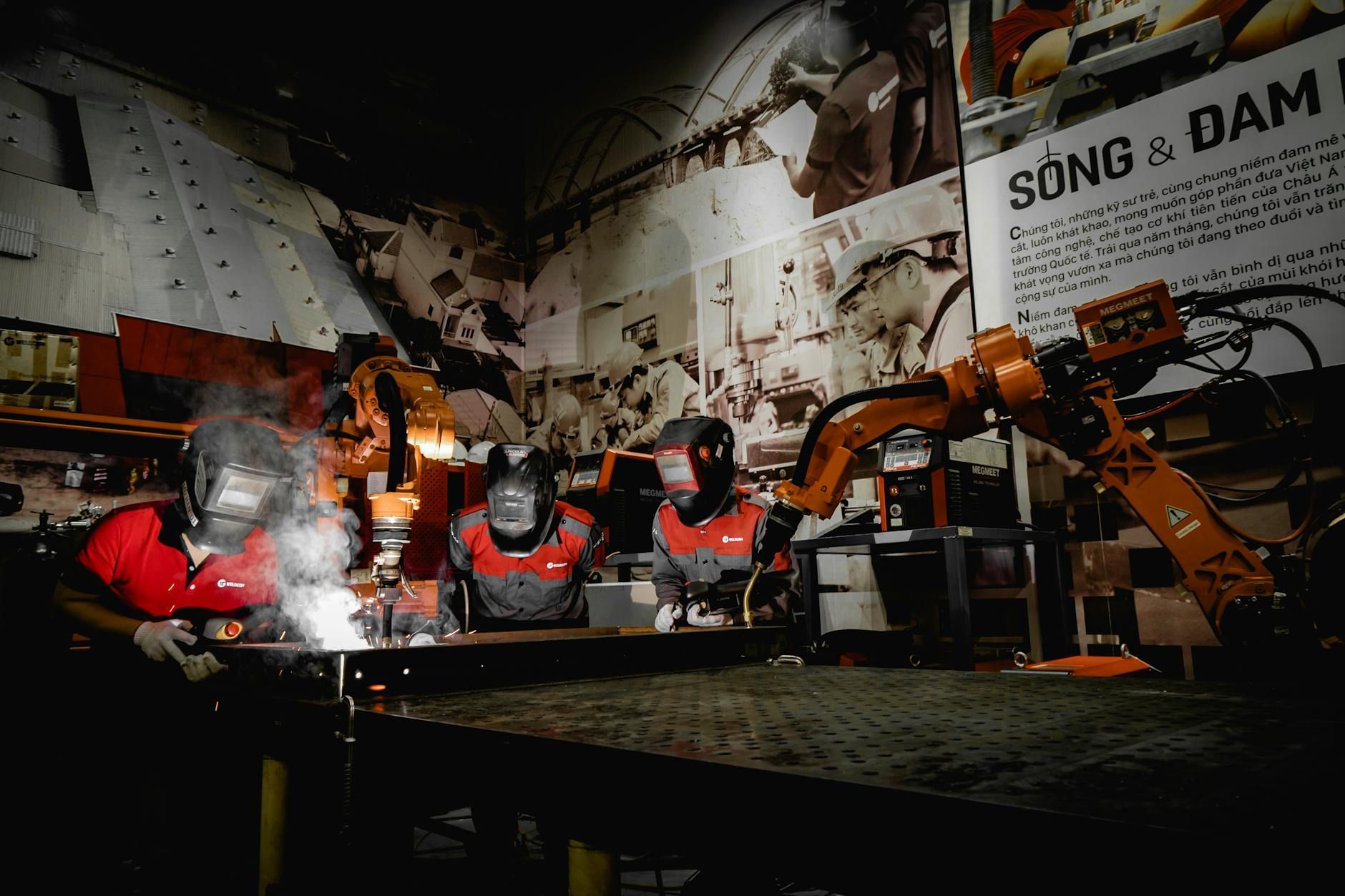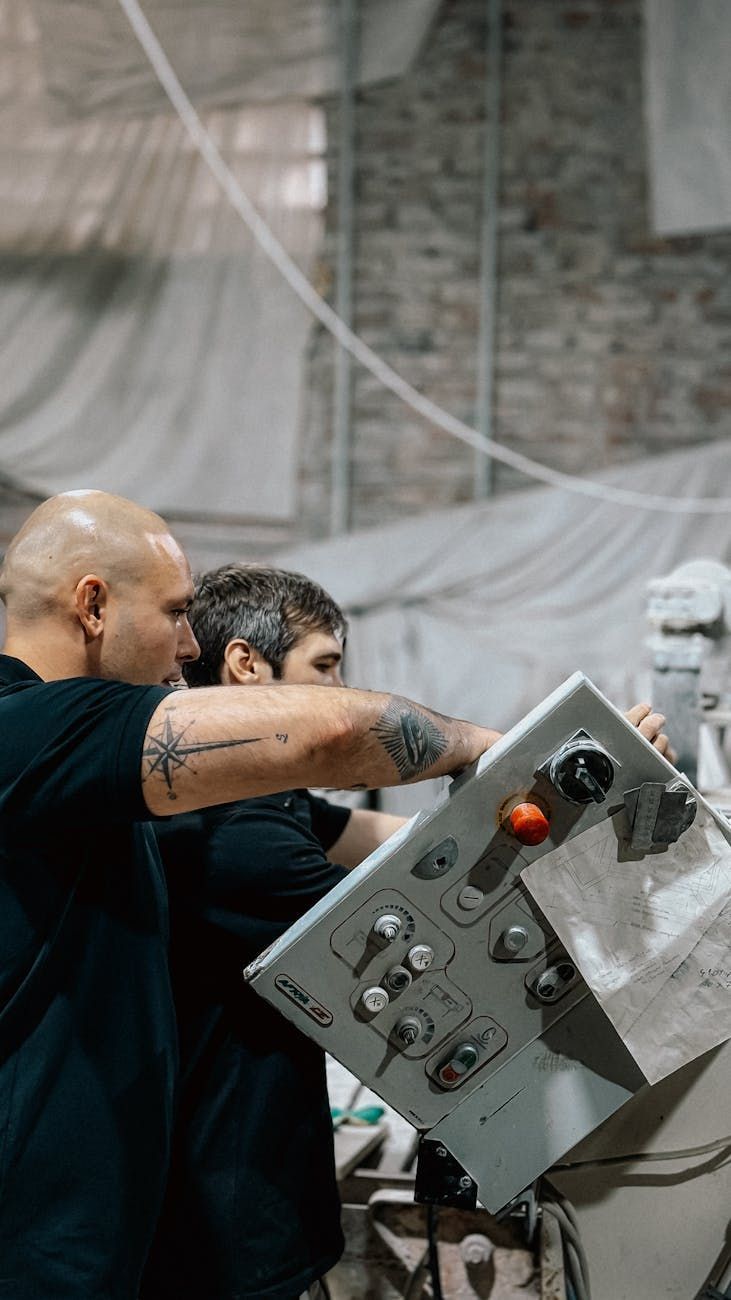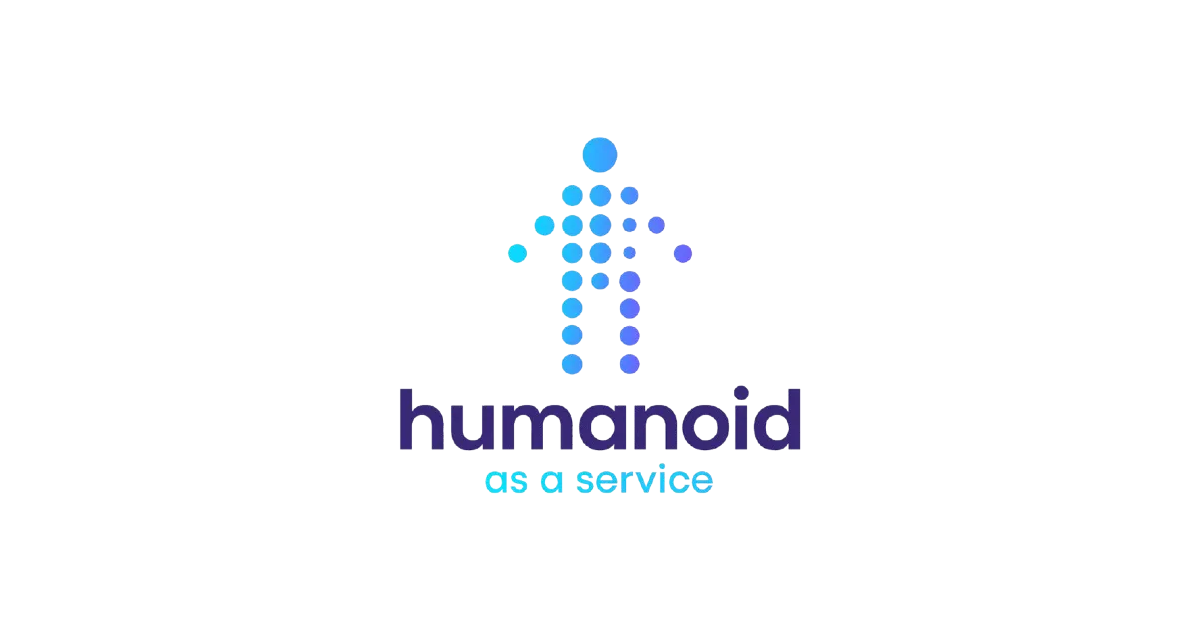Strong Wealth Solutions
Transform Your Operations with Smart Workforce Automation Technologies
If you’ve been exploring ways to stay competitive in the modern market, workforce automation technologies might feel like a secret weapon you’ve only just discovered. They promise to streamline your operations, relieve employees of repetitive tasks, and even predict future business needs with uncanny accuracy. The best part? These technologies can be surprisingly friendly to implement once you understand their potential. And by potential, I mean a full-scale transformation of your day-to-day workflow so you can stay ahead of the game.
Let’s dive into how you can use these automation solutions to free up time, boost productivity, and ultimately create more space for strategic thinking in your organization. In this guide, you’ll see how each piece of automation fits together, like gears in a well-oiled machine, to power smoother and smarter operations. So, grab your coffee and let’s chat about taking your business to the next level.
Recognize the value of workforce automation
You might be thinking, “Is automation really going to help me grow?” Absolutely. By taking on repetitive tasks, modern automation tools free you and your team to tackle creative projects that drive revenue and innovation.
Why it matters
Workforce automation, at its core, is about leveraging software and sometimes physical robotics to handle tasks that humans find mundane or time-consuming. Doing so not only improves efficiency but also reduces errors caused by fatigue or oversight. You can likely imagine a scenario where your finance folks spend hours generating reports or transferring data manually. Automation handles these steps flawlessly, letting your finance experts focus on strategic budgeting and forecasting instead.
Plus, automated systems tend to leave a super-clean data trail behind. This means analyzing performance or pinpointing inefficiencies suddenly becomes more straightforward. The result is a cycle where data insights power continuous improvement, which boosts profitability and morale. In other words, automation can set you up for success in a way that purely manual processes rarely can.
The AI dimension
Artificial intelligence (AI) takes automation up a notch. Instead of just following a script, AI-based tools learn from patterns. The more data these tools handle, the sharper they become at predicting what might happen next. Let’s say you run a logistics operation that moves goods across multiple countries. An AI-driven automation system can forecast supply chain disruptions and reroute deliveries in real time. That’s a major competitive edge when every minute counts in customer satisfaction.
AI also powers chatbots, advanced analytics, and speech recognition. So, if your business relies on customer input, you can tap into AI to parse feedback in large volumes. This frees human support agents from sifting through mountains of data, allowing them to apply their expertise where strategic human interaction really counts.
Discover top technologies
To make the most of workforce automation, you need to choose the right tools. Here are some key categories that have gained traction among forward-thinking executives and business leaders. You’ll see large-scale solutions (like advanced ML/AI platforms), as well as simpler wins (like chatbots) that anyone can deploy with minimal fuss.
Robotic process automation
Robotic process automation, or RPA, focuses on rule-based tasks that are high-volume and prone to human error. Think invoice processing, data entry, and mass email management. If you deploy robotic process automation in your finance department, for example, you can automate purchase order creation and reconciliation steps, freeing your talented accountants to dive deeper into financial strategy.
RPA bots don’t require complex coding. They usually have a visual interface where you record a workflow: open this spreadsheet, copy column A, paste it into the CRM, and so on. These bots then replicate your actions at lightning speed without making mistakes. It isn’t the flashiest form of automation, but RPA does the grunt work that drains time and morale if left to humans.
Machine learning and AI analytics
Machine learning (ML) and other AI-driven analytics platforms excel at spotting patterns in your data. Let’s say you’re trying to forecast customer churn. An ML algorithm can process hundreds of factors—such as service usage, purchase history, and demographic data—and then alert you if someone is likely to ditch your brand in the near future. This level of insight allows you to craft personalized re-engagement campaigns, or pivot your product development to tackle emerging issues.
AI analytics can also streamline internal processes like scheduling or resource allocation. For instance, a workforce scheduling tool powered by ML can look at previous attendance trends, upcoming projects, and staff preferences, then create the most balanced schedule. Everyone wins: employees appreciate the fair workload, and you benefit from fewer scheduling conflicts.
Chatbots and virtual assistants
These days, customers (and employees) crave instant answers. Chatbots, when trained well, mirror human conversation to resolve straightforward inquiries in seconds. You can integrate them on websites, internal help desks, or even messaging platforms like Slack.
For external customer support, a chatbot can handle everything from basic FAQs to complex troubleshooting scripts. In an internal setting, a virtual assistant can help employees find company documents, request time off, or file IT tickets without waiting in a help desk queue. These tools reduce wait times dramatically and free your human support teams for higher-level tasks that require empathy or creative thinking.
Humanoid robotics
Humanoid robots might sound futuristic, but they’re already assisting in industries like healthcare, retail, and hospitality. These robots imitate human motions, can interact in a person-like manner, and handle tasks that require a gentle personal touch. Picture an automated concierge welcoming guests in a hotel lobby or a medical support robot assisting with patient check-ins. These machines operate with precision, reduce manual labor, and create a cutting-edge experience that can distinguish your brand from competitors.
However, humanoid robotics aren’t just for show. They also gather real-time data—such as foot traffic, human interactions, and environmental conditions—that can improve your customer journey insights at scale. Talk about a multi-talented team member.
Quick comparison table
Below is a snapshot overview of these four categories:
| Technology Type | Best For | Typical Benefits |
|---|---|---|
| RPA | Repetitive tasks, high volume | Reduced errors, expedited workflows |
| ML/AI Analytics | Predictive insights, data-heavy decisions | Informed forecasting, personalized solutions |
| Chatbots/Virtual Assistants | Instant response, FAQ handling | 24/7 availability, improved satisfaction |
| Humanoid Robotics | Interactive tasks, physical engagement | Enhanced customer experience, data collection |
Identify operational gains
When you implement automation, you’re looking at gains that extend beyond just faster data entry. Let’s explore key areas where you stand to benefit, so you can shape your strategy around your most critical business goals.
- Better accuracy. Machines don’t take breaks or get tired eyes. By cutting out human error, you reduce the need to recheck data and minimize costly mistakes.
- Higher employee morale. Your team appreciates tools that eliminate annoying tasks. This sense of relief can translate into better retention and a more pleasant work culture.
- Faster turnaround. Automated processes usually run at superhuman speed. Whether it’s processing an order or running a month-end report, you can guarantee next-level efficiency.
- Scalability. As your company grows, so will your need for rapid processes. Automations can often be scaled with a few configuration changes—no massive reorganization required.
- Deeper insights. The data logs from automated workflows can reveal patterns and trends, fueling big-picture decisions that push your business forward.
Taken together, these benefits aren’t just a short-term gain. They also lay the foundation for more strategic initiatives, from developing better products to rolling out highly personalized customer solutions.
Overcome barriers effectively
But let’s be honest, automation isn’t always plug-and-play magic. Some of the biggest challenges lie in culture, technology integration, and workforce buy-in. Here’s how to navigate these challenges effectively.
Cultural readiness
People often fear that automation might leave them jobless. However, the reality is more nuanced. Automation can actually create new job roles centered on planning, monitoring, and refining these systems. By explaining that the goal is to hand over dull, repetitive tasks to robots and free humans for strategic roles, you can ease anxiety and foster collaboration.
To prepare your internal culture, communicate openly about the benefits of workforce automation. Gather feedback from your teams to address specific concerns. And remind everyone that automation is a tool for empowerment, not a replacement for human creativity and insight.
Integration challenges
Another barrier might be connecting new automation tools to your existing infrastructure. Many organizations have legacy systems or older databases that aren’t designed for modern AI technologies. To tackle this, consider the following:
- Start small. Pick a pilot project that’s relatively low-risk.
- Use APIs. Modern automation tools often come with APIs that can pull data from older systems.
- Leverage a dedicated project manager. A champion who understands both the technical and human elements can smooth the transition.
Remember that integration is a journey. Don’t shy away from investing time in thorough planning. It can save you a ton of trouble down the line.
Optimize with HaaS
One solution that’s quickly gaining recognition is Humanoid as a Service (HaaS). Think of HaaS as an on-demand approach to deploying humanoid robotics and related services in your operations. Rather than purchasing expensive equipment and dedicating large sections of your office to a robotics team, you can “rent” or “subscribe” to humanoid capabilities that suit your particular workflow.
The synergy between humans and humanoids
Humanoid robots, by design, take functions that feel almost human. This synergy can be incredibly effective in customer-facing roles, complex manufacturing, and healthcare assistance. When you pair a humanoid with your human workforce, you get:
- A more interactive experience for customers.
- Consistent performance in tasks requiring repetitive motion.
- Real-time data streaming that helps identify bottlenecks.
Companies that leverage HaaS can test out advanced automation without committing to huge upfront costs. If you find that humanoids aren’t meeting your needs, you can pivot or downgrade the service model. On the flip side, if it works wonders, you can expand your usage at a comfortable pace.
Implement step by step
Where do you even begin? There’s no need to uproot your entire operation overnight. Instead, break the process down into manageable steps. Think of it like baking a cake. You don’t throw everything into the bowl at once. You measure, mix, and bake in stages.
Step 1: Evaluate
Start by assessing which tasks or processes eat up the most time, or which processes are prone to error and frustration. Talk to different departments to see where the biggest pain points lie. Maybe you have a scheduling black hole that devours hours every week. Or perhaps you’re drowning in customer service emails.
Next, quantify the impact. How many hours are wasted, and how many errors need rework? A clear baseline helps you measure the exact returns once you have the automation running.
Step 2: Plan
Once you know which processes are prime candidates for automation, map out your strategy. Decide what mix of technologies you’ll need, whether it’s RPA for invoice processing or AI analytics to forecast inventory demand. Also, think about who should manage the transition. You might create a small, specialized team or tap a third-party vendor.
Budgets matter too. Pricing for workforce automation tools can vary widely. While some solutions, like basic chatbots, can be budget-friendly, advanced humanoid robotics might require larger upfront or subscription-based investments. Factor all these into your plan.
Step 3: Scale
Finally, roll out your solution and run pilot tests. Gather feedback from your teams early on to make quick adjustments. Once you see tangible improvements—like faster document processing or fewer complaints about shipping delays—you can expand the scope of your automation.
This scaling process also includes training for your staff. The more your team understands the system, the more effectively they can harness it for continuous improvement. Keep an open forum for questions, and encourage employees to share creative ways to use the technology.
Explore real-world examples
Imagine you run a mid-sized retail chain. Your daily operations involve coordinating with multiple vendors, processing invoices, and fielding a barrage of customer service requests. This can be overwhelming, to say the least.
- You begin with robotic process automation to handle invoice data entry. That alone saves heaps of hours every week.
- Next, you implement AI analytics to forecast product demand. Suddenly, you’re noticing patterns in customer buying habits that help you optimize inventory. Fewer stockouts mean happier, returning customers.
- You then add a chatbot on your customer portal, which automatically handles basic inquiries—like return policies and shipping rates—24/7. Your customer service staff is thrilled because they can devote more time to complex concerns that grow customer loyalty.
- Finally, you bring in a blushingly futuristic humanoid robot to greet customers at your flagship store. It answers questions about store layout, helps locate products, and automatically updates a central dashboard to gauge foot traffic.
Each of these pieces weaves together. You end up with a streamlined operation that cuts manual labor in half, frees your employees for tasks they enjoy, and wows customers with speedy service.
Plan your next move
So, where do you go from here? You can start small by automating a single, repetitive process. Or, if you feel adventurous, you might jump straight into exploring a HaaS subscription model. Either way, it’s best to take steady, confident steps rather than leaping without a roadmap.
- Conduct an internal audit. Highlight areas where you can deploy workforce automation technologies with a low risk-to-reward ratio.
- Bring your teams into the conversation. Keep them informed and excited about the improvements.
- Reach out for help. Collaboration with automation providers or consultants can make a world of difference.
Ultimately, automation is about freeing your business from drudgery so you can focus on creative, strategic endeavors. As you adopt new systems, keep a clear eye on how each tool impacts your daily workflow and your bottom line. Celebrate quick wins, and be open to revising anything that doesn’t perform as expected. That’s how you’ll unlock the truly transformative power of these solutions.
If you’re ready to take the next leap right now, Humanoid as a Service (HaaS) can be an excellent option. Why not book a free consultation or Get started here: https://www.humanoidasaservice.com/get-started
There’s no better time than now to embrace workforce automation technologies. By rooting out inefficiencies and leveraging AI, chatbots, RPA, and even humanoid robotics, you can build a future-ready organization that adapts to whatever changes come your way. Here’s to making your operations run smoother, your teams happier, and your vision bolder.
SHARE THIS POST:
Leave A Comments:
Our Recent Posts:
Transform Your Workforce
Experience the future of work today. Book a pilot project or demo to see how humanoid automation can elevate your operations.








